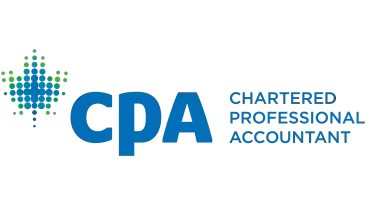2 Triggers to Stay Clear of That Could Prompt a CRA Tax Audit
Audit. This is probably one of the most feared words in a small business owner’s vocabulary. A Canada Revenue Agency (CRA) audit can be one of the most stressful, frustrating, and costly things a small business can ever deal with.
But what triggers an audit? The truth is, we don’t know. The CRA doesn’t publish its audit selection criteria, however, there are ways we can infer the trigger points from our experience with thousands of clients and tax filings:
Below are two common triggers we see with our clients:
Trigger 1: High Professional Fees
If you operate in an industry that doesn’t normally incur high professional fees (lawyers, consultants, accountants, etc.) then reporting very high professional fees on your corporate tax return may trigger a “Corporation Post Assessing Review.” This type of review is extremely common and begins with the CRA sending your corporation a letter requesting the details on professional fees deducted in a given taxation year. You’ll have to provide your assigned CRA agent with a listing of the professionals or firms that billed you, explanations as to why your corporation was billed, and provide evidence of payment and an official invoice for the services provided.
The CRA will review the data and decide whether the professional fees were deductible against your corporation’s revenue. Some common areas of disagreement are as follows:
- Fees invoiced to a business owner’s personal name or another business rather than to the corporation under review
- Fees incurred for non-business activities such as personal tax services, personal legal services
- Legal or accounting fees incurred to secure financing or in the course of certain re-organizations
How do you avoid this?
First, start by only deducting professional fees that are directly related to your business. Don’t try to hide personal professional services in the mix (i.e. legal fees related to purchasing your home, personal tax fees, etc.).
Second, ensure the professionals you engage address the proper corporation on their invoices. If they are working for your business, ensure they invoice your business and not you.
Third, ensure that your expenses are properly allocated. Professional fees, per the “General Index of Financial Information” (GIFI – the standard classifications for Canadian tax accounting) would be limited to services that are professional in nature such as legal fees, accounting fees, engineering fees, and other such fees. They would not include fees for other services such as advertising, computer-related fees, etc.
Trigger 2: Massive HST refunds
Harmonized Sales Tax or HST for short is a consumption tax that your business may or may not charge to customers and clients. HST is a value-added tax, meaning that it is a tax on the amount by which the value of an article has been increased at each stage of its production or distribution. What this means is that, from time to time, your business may be in a refund rather than payable position.
If you are in a refund position because you’ve made large amounts of instalments throughout the year then you should be fine. But, if you’re in a refund position because you’ve incurred more HST than you’ve collected you may find yourself subject to a CRA review.
These HST reviews are very common and, in most cases, the CRA is looking for the following:
- A description of your business activities
- A listing of your customers and clients and your issued invoices to them
- Clarification on any products or services you provide that are either exempt from HST or zero-rated (more on this later)
- A listing of your HST input tax credits (ITC - HST you incurred as an expense)
- Evidence to back up your top 10-25 highest ITC charges
The CRA is looking to ensure that you are charging your clients and customers the correct rate of HST:
- Nil: this would be for exempt supplies such as certain medical services, residential long-term rental, music lessons (you can find a list by CLICKING HERE )
- 0%: Zero-rated supplies attract a 0% rate of HST, for example, prescription drugs, exports, many transportation services where the origin or destination is outside Canada.
- 5-13%: Taxable supplies: These would be your normal supplies such as the sale or rental of commercial property, consulting, legal, or accounting services, and most other normal products and services with a commercial nature
In addition to the correct application of HST to your customers, the CRA is looking to ensure you are only claiming ITCs for which your business is entitled. Some common taxpayer errors:
- Claiming HST ITCs where no HST has been paid, for example, ITCs taken on gratuities or exempt supplies
- Claiming ITCs on expenses that relate to generating income exempt from HST, for example, repairs and maintenance to a residential rental property
- Claiming ITCs on items that are not business related, for example, auto repairs to a personal auto that is not used in your business
- Claiming ITCs on expenses that you can’t back-up with receipts
It’s important to ensure you are accurate in recording HST collected and expensed and ALWAYS KEEP YOUR RECEIPTS.
JPM Services
Keep more of your hard earned money.
Information is one of the biggest keys to success when it comes to owning and operating a small business.



